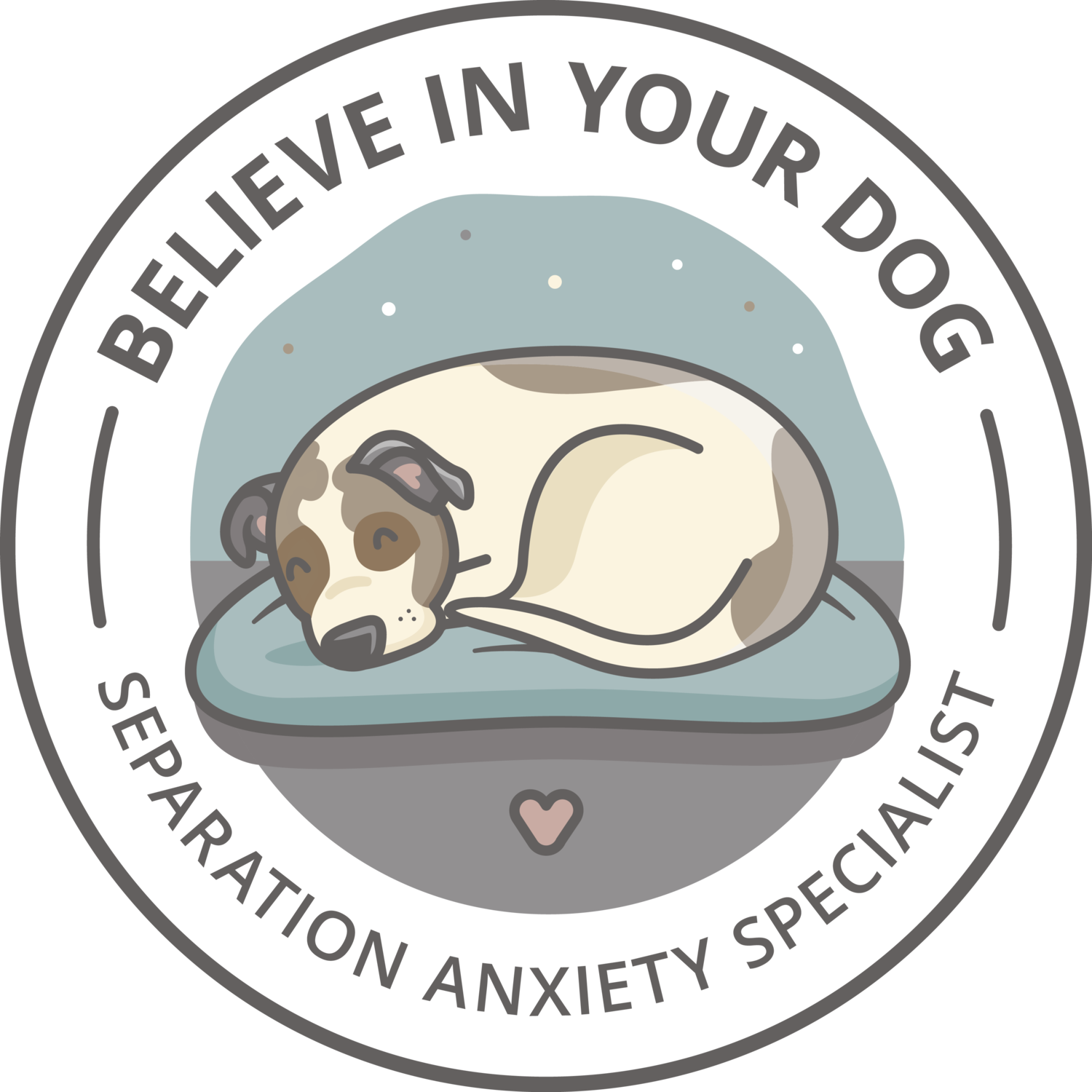How Long Does It Take to Resolve Separation Anxiety?
If you break a bone, your doctor will be able to tell you roughly how long it will take to heal. If you’re building a house, your contractor will know how many months before the job is complete. Unfortunately, separation anxiety treatment isn’t like that. Each dog’s trajectory is different. And recovery can be complex.
Variables Beyond Our Control
It would be unethical for me to make promises regarding length of treatment for one simple reason: There are often innumerable variables at play over which I have zero control. There may be an undiagnosed medical issue that is affecting the dog’s comfort with being alone. Genetics also play a key role, as does the dog’s past learning history. These are not parameters that I can simply tweak in my alone-time protocol.
And no matter how effective my coaching skills may be, I cannot force my clients to follow the protocol to the letter. Don’t get me wrong – it is my job to make the implementation of the training plan as doable and foolproof as possible for my clients. It is my job to be their cheerleader when they’re feeling defeated. It is my job to strategically reinforce the things they’re doing right throughout the process. I can systematically shape and influence their behavior, but I cannot do the training for them.
If a clinically depressed patient asked their therapist how long it would take to cure their condition, the answer wouldn’t be simple. The therapist would likely explain that recovery time is highly variable and that it would be arbitrary to even give a ballpark estimate. But one thing is for sure: It requires the patient showing up to do the work. And the same is true in separation anxiety training.
Variables We Can Control
The good news is that there are a lot of variables that we can control. Resolution of separation anxiety is possible, if we get to work on the following:
1. Consistency with training
In my alone-time protocol, training sessions happen frequently. I ask my clients to practice 4-5 days a week. In the beginning, these exercises are brief so you won’t feel overwhelmed. As the dog gets more and more comfortable, sessions are long enough that you can run errands or accomplish other tasks.
2. Suspending absences
Making a commitment to stop leaving your dog alone unless you’re in a training session isn’t just important, it’s 100% necessary. To teach our dogs that alone-time is safe, we have to stop sending them into states of panic with repeated departures.
3. Going at your dog’s pace
When we make training decisions based on empirical data rather than intuition, training is efficient and progress is made. This means letting our dog’s comfort level at the existing step influence the parameters for the next step. It also means that we must get good at reading our dog’s body language.
4. Trusting the process
There will be ups and downs in your dog’s journey. It will feel like it isn’t working. This is when your commitment to the training and trust in the science will be tested. The sooner you can let go of the doubt and trust the process, the sooner you can get back to work that is needed.
5. The right meds at the right dose
Trust in the science of pharmacology and the knowledge of medical experts. Many dogs benefit greatly from the right meds at the right dose; open yourself up to the possibility that your dog might be among them. I would be remiss not to mention that I am not a veterinarian. I am merely encouraging you to consult with your vet or a vet behaviorist about meds if your dog is truly suffering.
If you’re apprehensive, I encourage you read about the most common objections and some of the different meds that are available.
6. Defining (and perhaps refining) your goals
How long do you need to be able to leave your dog? If you work from home, you might be okay with as little as two hours so you can run errands and go to appointments. If you work away from home, is there any way that you can break the day up into chunks by hiring a dog walker to come in midday?
Final Thoughts
For all the reasons above, I am hesitant to project timelines for individual dogs. But based on my years of experience, I can tell you to expect to dedicate a minimum of six months to training. Sometimes it happens faster; sometimes it happens slower. I’m never surprised if it takes a year or more for my clients to reach their goals. If you reach your absence goal in less than six months, you should celebrate! You got through it more quickly than most.
I wish there was a magic wand that I could wave that would end your dog’s distress in a nice and tidy, predictable timeframe. But I can’t. I can, however, be fully transparent about the sometimes messy and unpredictable process.
It’s a marathon, not a sprint. But my clients have proven to be some impeccable endurance runners.


